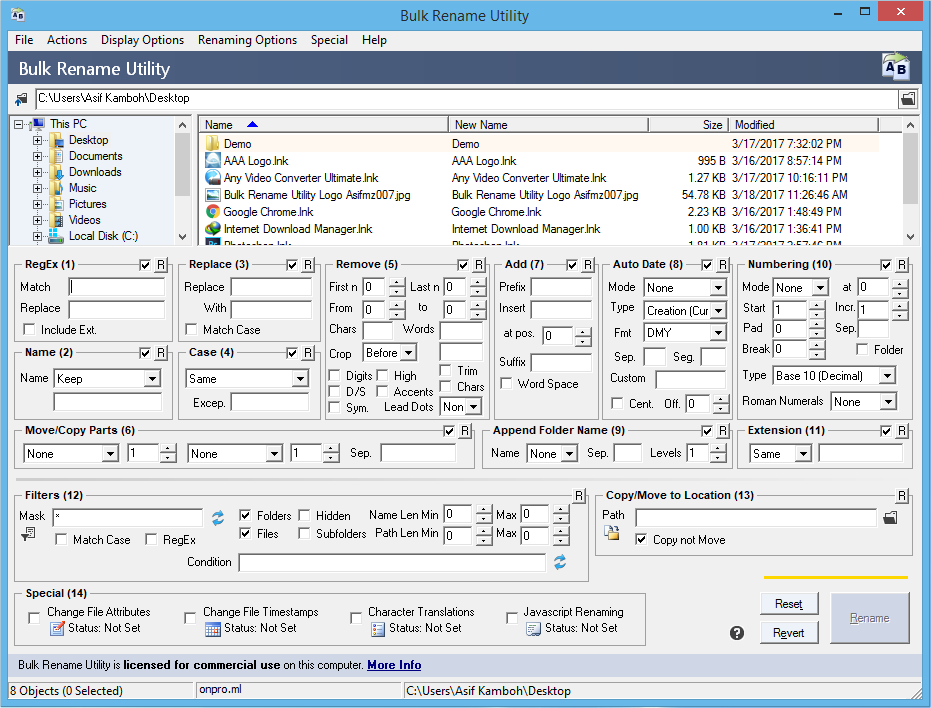
This way you can just play until you are sure that the tool will really perform the changes you intended. Probably, its best feature is that it displays immediately how the configuration would change the selected filenames. The easiest way to learn how it works is by trial and error. The manual is a bit stingy on instructions of how to use this tool. However, the Bulk Rename Utility is also a useful tool if you don't know regular expressions.


Regular expressions are so powerful that any kind of renaming you can imagine can be done with them. The manual of the Bulk Rename Utility contains some useful examples which you can use to get started.īasically, you use regular expressions to tell the Bulk Rename Utility which criteria those filenames that you want to change must match, and you also use them to specify in what way you want to change them. As there are many fields where regular expressions are useful for sysops, it might be worth the time. Unfortunately, there is no easy way of learning how to work with them. If you want to get the best out of this tool, you have to know how to handle regular expressions. The file renaming process needs to be connected with the applications GUI so the user knows what is happening at any given time. I would suggest entering 'linux bulk file rename' into Google (or your favourite search engine) and doing some reading. Step 1: Review Your Packages Step 2: Choose Your Integration Method Step 3: Enter Your Internal Repository Url Step 3: Copy Your Script or Download Config.


 0 kommentar(er)
0 kommentar(er)
